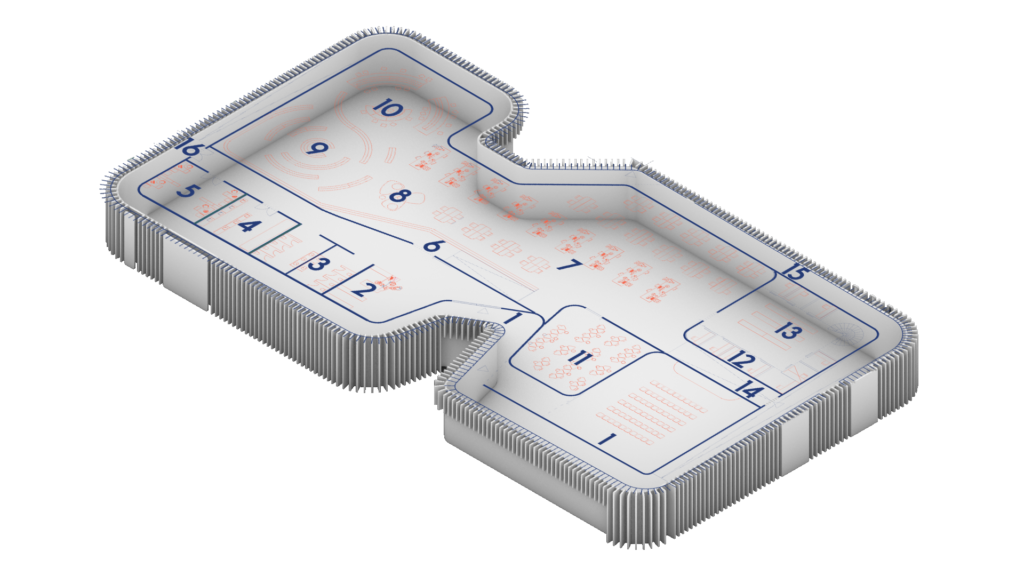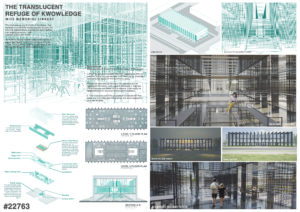THE PASSAGE
Undoubtedly, Mies’s IIT Master Plan was the first of the main elements in the selection of the design area. In addition to fitting the gridal system and providing symmetry in Mies’ master plan, the intensity of usage and accessibility of the existing structures led us to make a proposal in Siegel Field.
The flow in the campus and the time spent in the verbant area were the second factors that determined how the mass we envisioned would be located in the chosen design area.
Besides of the main entrance on the east side, the auditorium curves into the north wing. It is an auditorium with a capacity of 60 people, open for flexible use. The Mies Collection and its special study capsules are located in the North-Western wing. Mies Collection is surrounded by these capsules. These capsules continue in the second floor, surrounding the Mies Collection, forming into a mezzanine floor.
The main reading room is uniquely designed with different seating groups and a circular library system. Room sizes were determined from the sizes and arrangements of desks, drafting tables, and benches. This in turn began as a reverse planning order and determined the direction of the growth of the campus, where the furniture determined the room size, which then added up to the building size, and together the buildings created the campus.
With sustainable concerns selected building materials, lamella on the façade and recycled glasses are pretty vital. On glass façade, the aim was to realize the reflective design concept that Walter wanted to use in reference to Mies’s buildings, while creating a spacious and bright atmosphere in the library by creating light games in the passage surrounded by wooden lamellas.
Linearity and flow, which we minimalize and interpret with the Bauhaus design approach, are the two basic concepts that determine the lines of mass.
Context is one of the important elements in the shaping of the mass as well as in its positioning.
The concave folds used in the east and west almost invite users to the building. In addition, the passage surrounding the mass provides the opportunity to experience the mass in a different way.
libraries are DEFINING AS stop poınts ,WITH ITS passage THIS LIBRARY becomes a trasıtıon poınt of ııt campus.









